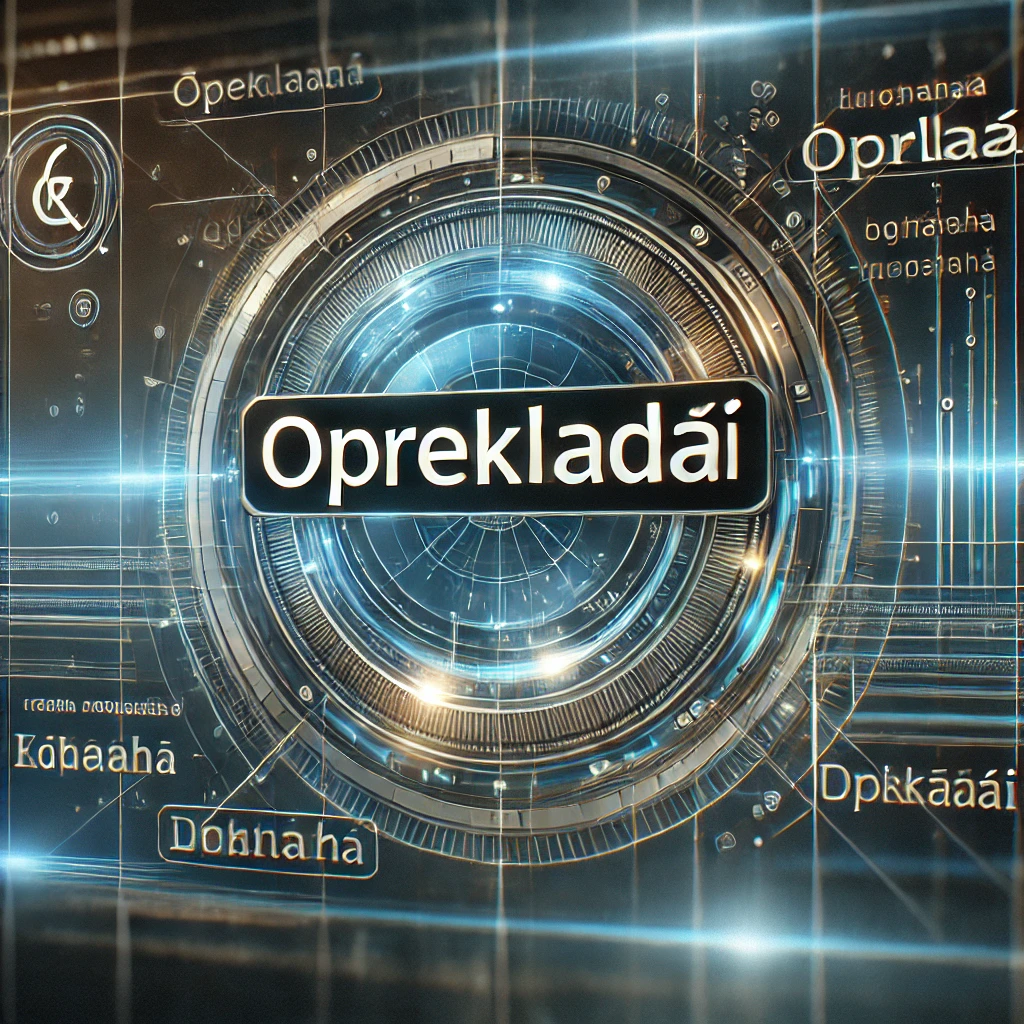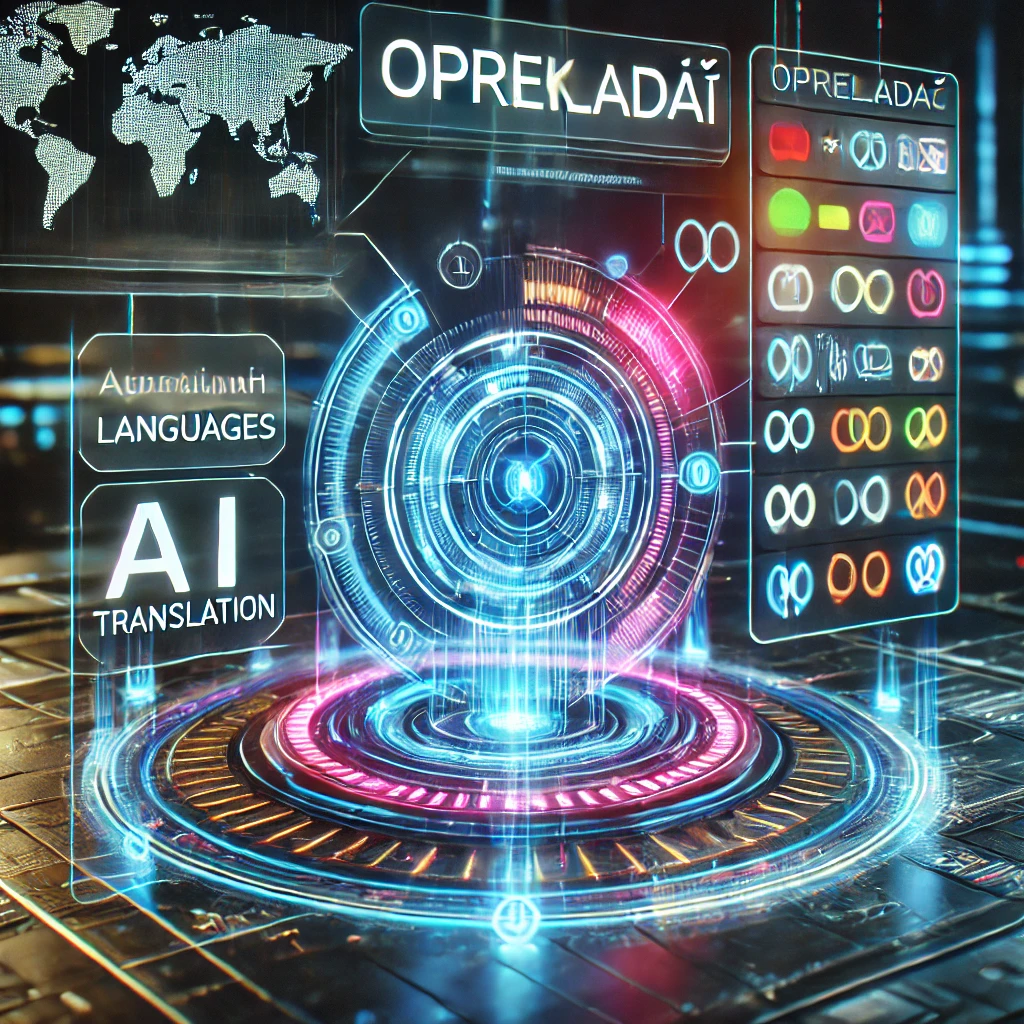What is Oprekladač?
Oprekladač is a term that signifies a pivotal element in the realm of technology and linguistics, often serving as a translation tool albeit with broader implications. Derived from the Slavic language, the word translates to “translator” or “interpreter,” and it encapsulates the essence of converting content from one form to another. Oprekladač finds its applications predominantly in digital contexts where information transcends language barriers, thus fostering effective communication in a globally interconnected environment.
In contemporary settings, Oprekladač systems leverage advanced algorithms and artificial intelligence to facilitate seamless translations across multiple languages. This evolution has been a significant leap from traditional translation methods, which relied heavily on manual intervention. The development of Oprekladač has, therefore, transformed how users interact with multilingual content, making information accessible to a broader audience. The advent of machine learning techniques has enabled these systems to improve over time, refining their understanding of context, nuance, and cultural subtleties within languages.
Moreover, Oprekladač serves various industries, including technology, where software localization is crucial for global applications; linguistics, which focuses on studying language structures; and communications that rely heavily on accurate information exchange between speakers of different languages. Thus, understanding what Oprekladač is, along with its functional capabilities, underscores its vital role in enhancing operational efficacy across myriad disciplines. As global connectivity continues to deepen, the importance of Oprekladač will only grow, reinforcing its status as an indispensable tool for modern communication.
Key Features and Functions of Oprekladač
Oprekladač is a sophisticated tool designed for seamless translation and localization. At its core, it utilizes advanced machine learning algorithms and natural language processing techniques to achieve high accuracy in its translations. The system is capable of understanding context, idiomatic expressions, and variations in dialects, making it highly effective for diverse languages.
One of the standout features of Oprekladač is its intuitive user interface, which enhances user experience by providing easy navigation through its various functions. Users have access to a range of text and speech translation services, allowing for flexibility depending on their specific needs. Additionally, Oprekladač supports a multitude of input formats, including documents, web pages, and audio files, which broadens its applicability across different contexts.
Oprekladač employs a continuous learning framework, wherein its algorithms are regularly updated based on user feedback and new linguistic data. This iterative improvement process ensures that the translations provided are not only accurate but also relevant to current language usage trends. Furthermore, it features customizable options allowing users to select industry-specific jargon or formal versus casual tones, making it versatile for professional and personal use alike.
In terms of applications, Oprekladač is widely utilized in various sectors such as education, business, and tourism. It holds particular significance for organizations engaging in cross-border operations, facilitating effective communication with clients and partners. What sets Oprekladač apart from other translation tools is its commitment to not only accuracy but also cultural sensitivity, ensuring that translations resonate with the intended audience. Through its unique features and functions, Oprekladač stands as a pivotal resource in bridging language barriers effectively.

Benefits of Using Oprekladač
Utilizing Oprekladač provides numerous advantages that significantly enhance productivity and efficiency across various tasks. One of the most notable benefits is its ability to improve accuracy in translations, ensuring that users receive precise and contextually relevant interpretations. By eliminating potential errors that might arise from manual translation, Oprekladač stands out as a valuable tool for businesses and individuals alike. For instance, a multinational company employing Oprekladač in its operations reported a 30% reduction in communication errors due to enhanced translation accuracy. This demonstrates how Oprekladač can facilitate smoother interactions within diverse teams.
Additionally, Oprekladač streamlines the translation process, allowing users to focus on their core tasks rather than getting bogged down by language barriers. The software’s efficiency in translating documents, emails, and other materials means that users can work more quickly and with greater ease. For example, a legal firm that integrated Oprekladač into its workflow found that turnaround times for contract translations decreased significantly, thereby accelerating their project timelines without compromising quality.
Moreover, the adaptability of Oprekladač to various contexts is essential in today’s globalized environment. It accommodates a wide range of languages and specialized terminology, making it an ideal choice for professionals in diverse industries, including healthcare, technology, and finance. By addressing specific jargon and nuances, Oprekladač ensures a high level of relevance and comprehension, which is critical in fields where precision is paramount.
In conclusion, the benefits of using Oprekladač extend far beyond basic translation tasks. Its effectiveness in enhancing productivity, improving accuracy, and being adaptable to various contexts make it a compelling choice for anyone needing robust translation solutions. By adopting Oprekladač, users can navigate language challenges seamlessly and focus on their primary objectives with renewed efficiency.
Future Developments and Trends in Oprekladač Technology
The landscape of Oprekladač technology is poised for significant evolution in the coming years. With advancements in artificial intelligence, machine learning, and natural language processing, the capabilities of Oprekladač systems are expected to expand dramatically. These technologies promise to enhance translation accuracy by enabling Oprekladač systems to better understand context, idiomatic expressions, and industry-specific jargon. As a result, the user experience will likely improve, making Oprekladač tools more intuitive and responsive to user needs.
Furthermore, the growing demand for real-time translation services is likely to drive innovation in Oprekladač technology. As globalization intensifies and communication across languages becomes more prevalent, the need for immediate and effective translation solutions will escalate. This could lead to the development of more sophisticated algorithms that not only translate text but also facilitate seamless conversation between speakers of different languages. The integration of voice recognition technology with Oprekladač systems could play a crucial role in this shift, enabling users to engage in instant dialogues across linguistic barriers.
Moreover, future Oprekladač technology is likely to embrace cloud-based solutions, allowing for greater accessibility and collaboration. These platforms can accommodate rapid updates and benefit from the collective contribution of users worldwide, enhancing the overall performance of translation systems. However, challenges such as data privacy and the potential for misinformation will need to be addressed to ensure user trust and efficacy in deployments.
As Oprekladač continues to adapt to changing needs and technologies, it is essential for developers and users alike to stay informed about emerging trends. By recognizing the importance of innovation, embracing new technologies, and understanding the complexities involved in multilingual communication, stakeholders can effectively navigate the future of Oprekladač technology.














Leave a Reply